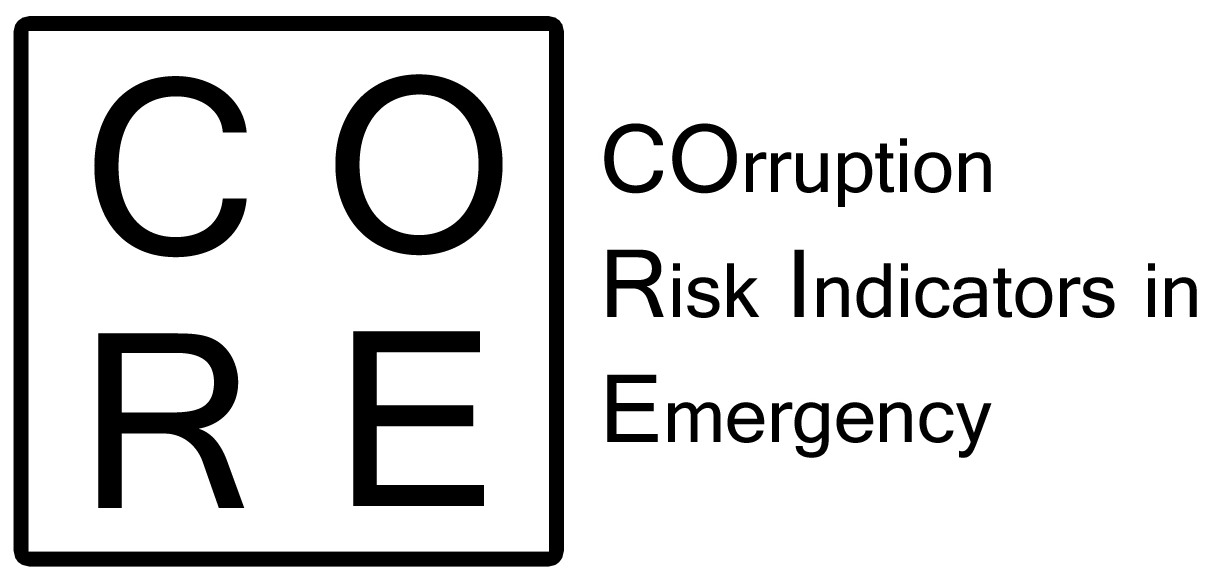Working paper on Public data availability, interoperability and reusability
Analysis of the European and State Members legal framework of procurement data quality, reusability and interoperability.
Working paper on privacy constraints
Analysis of the privacy and intellectual property constraints on procurement data reusability and interoperability. Identification of the limitations in the use of data to fight against corruption (i.e., privacy and intellectual property).
Compendium of good practices of use of data to improve integrity in public procurement
The compendium gathers information of different European public bodies about uses of data to improve integrity in public procurement
Data for public procurement integrity principles
Data for public procurement integrity principles stating the standards of data
“Data quality check, cleaning and pre-processing”. It includes two parts: a first part devoted to the R-codes for the pre-processing of the data and a second part including the User Guide, to help the user to apply autonomously the R-codes.
Normalized, weighted and aggregated data
Definition and application of the more adequate scale/s of normalization, weights and aggregation method through a specific context analysis needed to be carefully appraised when developing a composite indicator of corruption risk in public procurement.
The relational structure among single indices might be related to a more complex and multidimensional configuration rather than a simple and uni-dimensional one, where high correlations (and, possibly, causal dependencies) can be observed not only between sub-groups (or sub-dimension) of red flags but also from a complex and multidimensional perspective.
Validation of the CI on the basis of the Sensitivity analysis
The sensitivity analysis is a proper tool to assess the CI validity, as it studies how the variation in the output (e.g. CIs value and rankings) can be apportioned to different sources of variation in the assumptions, and to the way the given composite indicator depends upon the information fed into it. It also quantifies the overall uncertainty as a result of the uncertainties in the model input, and it helps to gauge the robustness of the composite indicator and identify which units (e.g. contracting authorities, provinces, regions, States) get favoured or weakened (i.e., getting higher/lower than expected corruption risk scores) under certain assumptions adopted during the corruption risk assessment procedure.
Technical guidelines for the platform
Technical features and specification for the database. The database will have to main functionalities:
a) To allow all the partners involved in the data collection to easily insert data of corruption cases in public procurements through a user friendly back-end interface.
b) To automatically identify common patterns (example: same company that paid bribes in different cases; same public administration that was bribed in different cases; same holding used to transfer money in different cases, etc.).
Guideline on how to collect data, the format needed for the data collected, which kind of data must be entered in the platform. The aim is to provide a consistent and coherent dataset to the researchers who will analyze the data.
Concept note – data visualization
concept note of the data visualization tool to the partners.
IT structure that allowS a) the partners to in-depth analyse the data referring to corruption cases in public procurement; b) the users to navigate or download the collected data in an open format for the re-use.
The Dashboard offers a graphic and interactive representation of the indicators developed in the previous phases.
E-book of final scientific publication
Final publication delving into the issue of adapting corruption risk assessment systems to emergency scenarios. The discussion revolves around the CO.R.E project aimed to enhance early detection of corruption risks through big data techniques and to establish a stronger evidence base for policy reform in emergency scenarios and leveraging sophisticated data-driven approaches and harnessing the power of big data to effectively address and counteract corruption in the public procurement cycle during times of crises.
Lessons learned: model of transferability of the CORE methodology for the definition of CI
Definition of how the CO.R.E partners intend to favour the transferability of the project results, tools, methodology, procedures, know how, and lessons learned to other countries, types of emergencies, and stakeholders.
Document exploring potential strategies for applying the CO.R.E outputs to analyse the risk of corruption within procurement systems financed by the Next Generation EU (NGEU) framework. Feasibility and implications of extending the application of CO.R.E indicators to scrutinize corruption risks in procurement systems funded under NGEU. This deliverable aims to bolster the sustainability and applicability of CO.R.E project outcomes.

